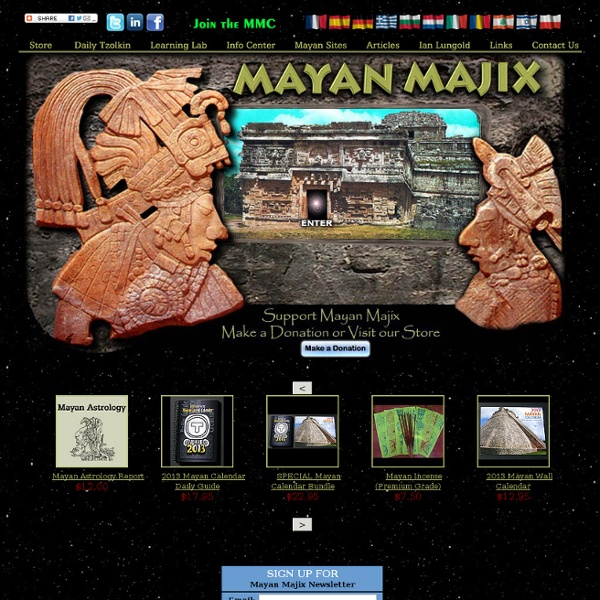



Mr Mondialisation Night Signature (Classical) : Yin/Male Aspect The first mayan calendar that I discovered was Tortuga's 'Dreamspell' calendar. I and my friends were continually blown away by how well this calendar 'worked'! Our Galactic Signatures were bang on, our Wavespells were always intense and significant, our 13-year cycles oh-so accurate, our 4 revolving Theme Years very telling and true. Then...along came the Classical mayan calender. It occured to me that, in this physical world, we are exposed to duality: yin/yang, male/female sun/moon - two parts of the Whole. This led me to the thought...: Why can't our Dreamspell Signature relate to our Left Hand and our Classical Signature relate to our Right hand? Your Dreamspell Signature represents your Potential, your Destiny. Your Classical Signature represents how you get to your potential - what you must do, what action you must take. I formulated this idea and then checked to see what I was according to the Classical Mayan Calendar.....and, wow, again I was totally blown away!
Le Coeur de la Yogini Mayankin: Tzolkin Tutorial Tzolkin, meaning the ‘Count of Days’ in Yucatecan, is the Sacred Mayan Calendar that was utilized by Mayan priests for ceremonies, rituals and divination purposes. This sacred calendar was followed by several Mesoamerican cultures and, although expressed with different names, they all consisted of a combination of 20 symbols by 13 numbers. The Cholq’ij, its name in Quiche, is still in use by the Day Keepers in Mayan communities of Highland Guatemala. The 20 symbols or glyphs are energies or archetypes represented by names, called in their modern term as Solar Seals. Each day has a unique combination of energies that affects a specific part of our Being. The modern version of the ancient Mayan Tzolkin is known as Natural Time 13:20, called as Dreamspell by Dr. Each Kin and its supportive energies conform an Oracle. The following section contains a general overview of the Tzolkin components.
Tao Zen Shin Mayan Converter Toolkit L’Art du Sexe Sacré Pour en finir avec l'égo ! On n'a pas à payer pour vivre sur cette planète Semons des graines, créons l'abondance J'arrete de travailler, je boycotte ce systeme Créons une nouvelle civilisation Exopolitique Devenir autonome, agir localement et penser globalement